Chapter Contents
Previous
Next
|
Chapter Contents |
Previous |
Next |
| The FREQ Procedure |
PROC FREQ computes the kappa coefficients (simple and weighted), their asymptotic standard errors, and their confidence limits when you specify the AGREE option in the TABLES statement. If you also specify the KAPPA option in the TEST statement, then PROC FREQ computes the asymptotic test of the hypothesis that simple kappa equals zero. Similarly, if you specify the WTKAP option in the TEST statement, PROC FREQ computes the asymptotic test for weighted kappa.
In addition to the asymptotic tests described in this section, PROC FREQ computes the exact p-value for McNemar's test when you specify the option MCNEM in the EXACT statement. For the kappa statistics, PROC FREQ computes the exact test of the hypothesis that kappa (or weighted kappa) equals zero when you specify the option KAPPA (or WTKAP) in the EXACT statement. See the section "Exact Statistics" for information on exact tests.
The discussion of each test and measures of agreement provides the formulas that PROC FREQ uses to compute the AGREE statistics. For information on the use and interpretation of these statistics, refer to Agresti (1990), Agresti (1996), Fleiss (1981), and the other references cited for each statistic.
Under the null hypothesis, QM has an asymptotic chi-square distribution with one degree of freedom. Refer to McNemar (1947), as well as the references cited in the preceding section. In addition to the asymptotic test, PROC FREQ also computes the exact p-value for McNemar's test when you specify the MCNEM option in the EXACT statement.
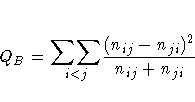
For large samples, QB has an asymptotic chi-square distribution with R(R-1)/2 degrees of freedom under the null hypothesis of symmetry of the expected counts. Refer to Bowker (1948). For two categories, this test of symmetry is identical to McNemar's test.

where ![]() and
and ![]() .If the two response variables are viewed as two independent ratings
of the n subjects, the kappa coefficient equals +1
when there is complete agreement of the raters. When the
observed agreement exceeds chance agreement, kappa is
positive, with its magnitude reflecting the strength of
agreement. Although this is unusual in practice, kappa is negative
when the observed agreement is less than chance agreement.
The minimum value of kappa is between -1 and 0, depending on the
marginal proportions.
.If the two response variables are viewed as two independent ratings
of the n subjects, the kappa coefficient equals +1
when there is complete agreement of the raters. When the
observed agreement exceeds chance agreement, kappa is
positive, with its magnitude reflecting the strength of
agreement. Although this is unusual in practice, kappa is negative
when the observed agreement is less than chance agreement.
The minimum value of kappa is between -1 and 0, depending on the
marginal proportions.
The asymptotic variance of the simple kappa coefficient can be estimated by the following, according to Fleiss, Cohen, and Everitt (1969):
where
![A = \sum_i p_{ii} \biggl[ 1-(p_{i \cdot} +
p_{\cdot i})(1-\hat{\kappa})\biggr]^2](images/frqeq122.gif)
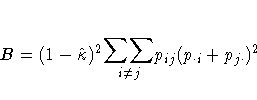
and
![C = \biggl[ \hat{\kappa} - P_e (1-\hat{\kappa})\biggr]^2](images/frqeq124.gif)
PROC FREQ computes confidence limits for the simple kappa coefficient according to

To compute an asymptotic test for the kappa coefficient,
PROC FREQ uses a standardized test statistic ![]() ,which has an asymptotic standard normal distribution under the
null hypothesis that kappa equals zero. The standardized test
statistic is computed as
,which has an asymptotic standard normal distribution under the
null hypothesis that kappa equals zero. The standardized test
statistic is computed as

where ![]() is the variance of the kappa coefficient
under the null hypothesis.
is the variance of the kappa coefficient
under the null hypothesis.

Refer to Fleiss (1981).
In addition to the asymptotic test for kappa, PROC FREQ computes the exact test when you specify the KAPPA or AGREE option in the EXACT statement. See the section "Exact Statistics" for information on exact tests.

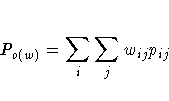

The asymptotic variance of the weighted kappa coefficient can be estimated by the following, according to Fleiss, Cohen, and Everitt (1969):
![var = \frac{\sum_i\sum_j p_{ij}
\biggl[w_{ij}-(\overline{w}_{i \cdot}+\overline...
...biggl[\hat{\kappa}_w
- P_{e(w)}(1-\hat{\kappa}_w)\biggr]^2}
{(1-P_{e(w)})^2n}](images/frqeq134.gif)
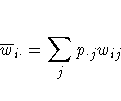

PROC FREQ computes confidence limits for the weighted kappa coefficient according to

To compute an asymptotic test for the weighted kappa coefficient,
PROC FREQ uses a standardized test statistic ![]() ,which has an asymptotic standard normal distribution under the
null hypothesis that weighted kappa equals zero. The standardized test
statistic is computed as
,which has an asymptotic standard normal distribution under the
null hypothesis that weighted kappa equals zero. The standardized test
statistic is computed as
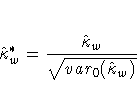
![var_0(\hat{\kappa}_w) = \frac{\sum_i \sum_j p_{i \cdot} p_{\cdot j}
\biggl[ w_...
...cdot} + \overline{w}_{\cdot j})
\biggr] ^2 - P_{e(w)}^2 }
{(1 - P_{e(w)})^2 n}](images/frqeq141.gif)
In addition to the asymptotic test for weighted kappa, PROC FREQ computes the exact test when you specify the WTKAP or AGREE option in the EXACT statement. See the section "Exact Statistics" for information on exact tests.
Weights PROC FREQ computes kappa coefficient weights using the column scores and one of two available weight types. The column scores are determined by the SCORES= option in the TABLES statement. The two available weight types are Cicchetti-Allison and Fleiss-Cohen, and PROC FREQ uses the Cicchetti-Allison type by default. If you specify (WT=FC) with the AGREE option, then PROC FREQ uses the Fleiss-Cohen weight type to construct kappa weights.
PROC FREQ computes Cicchetti-Allison kappa coefficient weights using a form similar to that given by Cicchetti and Allison (1971).

If you specify (WT=FC) with the AGREE option in the TABLES statement, PROC FREQ computes Fleiss-Cohen kappa coefficient weights using a form similar to that given by Fleiss and Cohen (1973).

An estimate of the overall weighted kappa is computed in a similar manner.
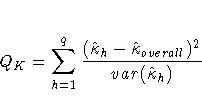
A similar test is performed for weighted kappa coefficients.

where Tj is the number of positive responses for variable j, T is the total number of positive responses over all variables, and Sk is the number of positive responses for subject k. Under the null hypothesis, Cochran's Q is an approximate chi-square statistic with m-1 degrees of freedom. Refer to Cochran (1950). When there are only two binary response variables (m=2), Cochran's Q simplifies to McNemar's test. When there are more than two response categories, you can test for marginal homogeneity using the repeated measures capabilities of the CATMOD procedure.
To include a variable level with no observations in the analysis, you can assign an extremely small weight (such as 1E-8) to an observation with that variable level. Then the analysis includes this variable level, but the statistic value remains unchanged because the weight is so small. For example, suppose you need to compute a kappa coefficient for data from two raters. One rater uses all possible ratings (say, 1, 2, 3, 4, and 5), but another rater uses only four of the available ratings (1, 2, 3, and 4). You can create an observation where the second rater uses the rating level 5 and assign it a weight of 1E-8. This forms a 5 ×5 table for the analysis.
|
Chapter Contents |
Previous |
Next |
Top |
Copyright © 1999 by SAS Institute Inc., Cary, NC, USA. All rights reserved.